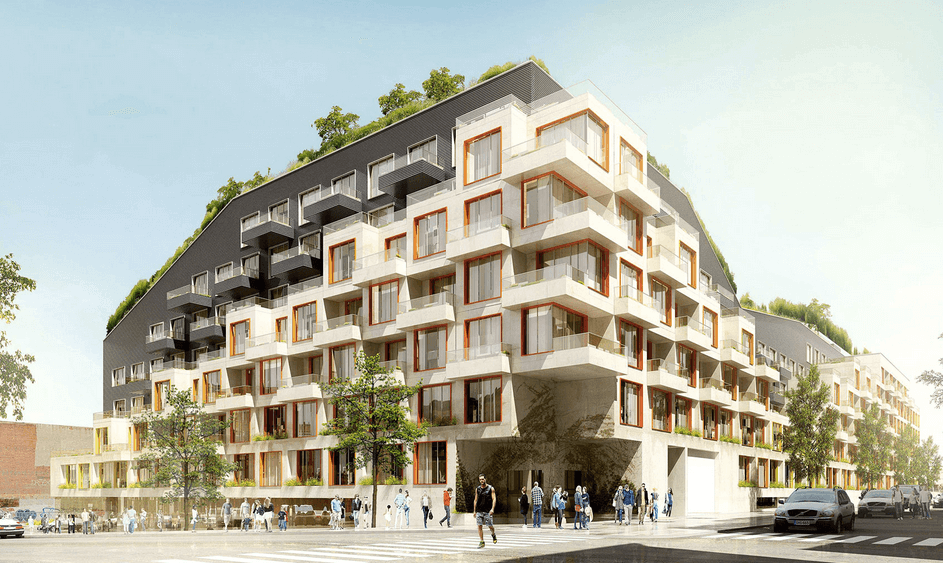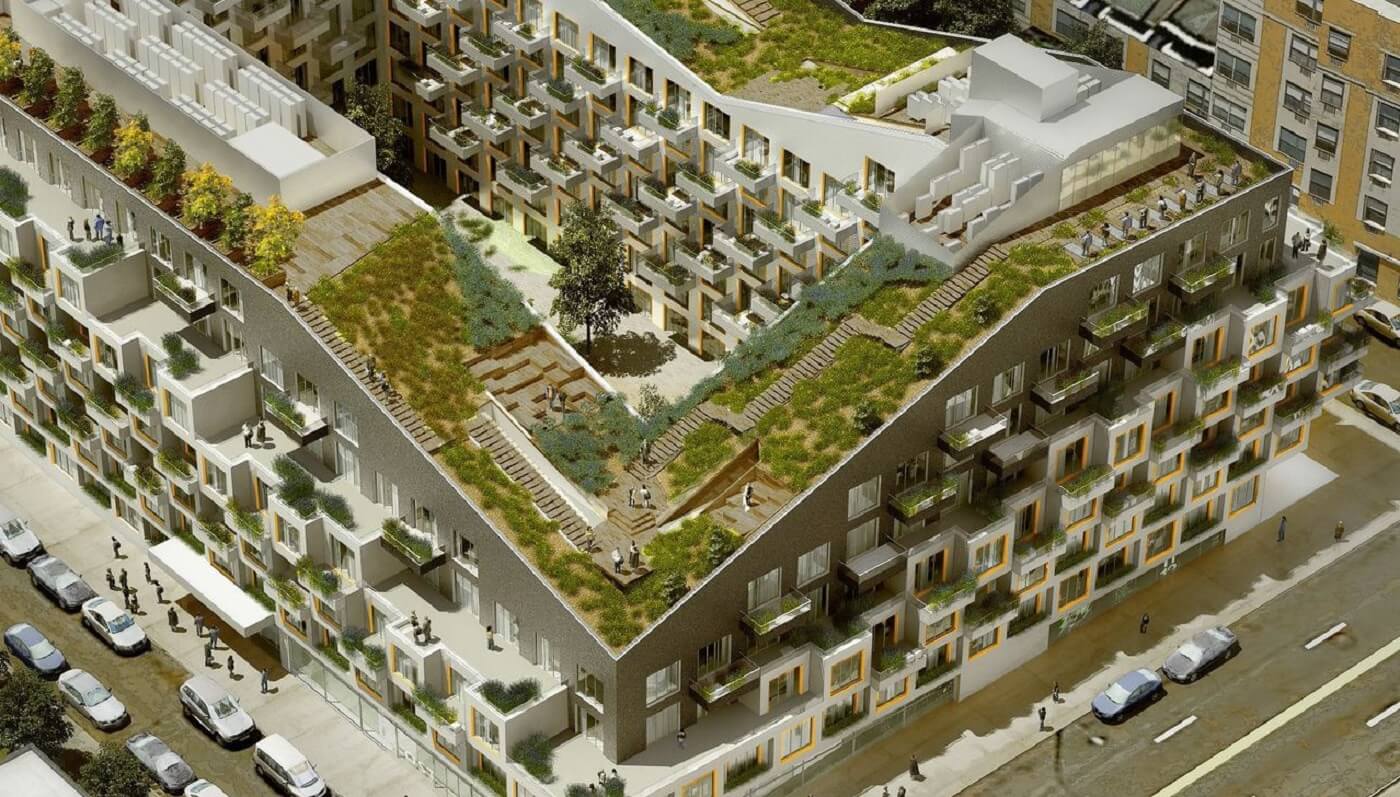ODA Design for Rabsky's Rheingold Build Shapes Up on Montieth Street in Bushwick
ODA’s and Rabsky’s unusual and ambitious Rheingold development on Montieth Street in Bushwick is beginning to assume its final form.

Photo by Seán Devlin
ODA’s and Rabsky’s development on the former site of the Rheingold Brewery at 10 Montieth Street in Bushwick is beginning to assume its final form.
The building’s white exterior is rising on the structure and the building is beginning look like its renderings. The effect is somewhat sculptural — and slightly reminiscent of traditional plaster or mud construction.
The staggered balconies create a strong rhythmic pattern across the facade.

Part of the sprawling for-profit redevelopment of the former Rheingold Brewery that will substantially change Bushwick when it is finished, the eight-story complex will have 392 mixed-income apartments and face Bushwick Avenue.
With its stepped, zigzagging green roof with farm and running paths, the complex is unlike anything ever constructed in Bushwick (or Brooklyn, for that matter). It looks a little bit like self-contained preindustrial communities such as pueblo or cliff dwellings with communal gardens.

ODA is one of a handful of firms making a big impact on Brooklyn architecture. Like most ODA designs, this one is a variation on the theme of a singular extruded block deconstructing into a multiplicity of boxes.
Rabsky is a force in Brooklyn; projects include a mega-development at the nearby Pfizer site in the Broadway Triangle.

The brewery, which took up many blocks in Bushwick, was run by the Liebmann family and produced Rheingold beer. The last bottle of Rheingold was sold in the New York area in 1978. The huge plant, which had provided so many jobs to Bushwick residents, was torn down in 1981.

An award-winning complex of affordable housing was completed on part of the former brewery site in the early 2000s. In 2013, the remaining undeveloped blocks were rezoned to allow housing.
At the time of the rezoning, the property’s initial developers promised 30 percent affordable housing, but subsequent owners have scaled back those to 20 percent, leading to controversy. The for-profit development will bring blocks of market-rate luxury housing to the traditionally working class neighborhood.
Bushwick has a significant amount of affordable housing, much of it built under the reign of the late State Assemblyman Vito Lopez, but the size of this for-profit complex will probably rival only Hope Gardens, public housing built on the ruins of the fires that swept Bushwick in the 1970s.
[Photos by Seán Devlin]
Related Stories
- ODA’s Eye-Popping Build With Green Roof for Rabsky and Rheingold Finally Rising in Bushwick
- ODA’s Design for Rheingold Brewery Site Seems to Be Inspired by Cliff Dwellings
- “My Beer Is Rheingold, the Dry Beer” — the Beer, the Brewery and the Bruhaha
Email tips@brownstoner.com with further comments, questions or tips. Follow Brownstoner on Twitter and Instagram, and like us on Facebook.









What's Your Take? Leave a Comment